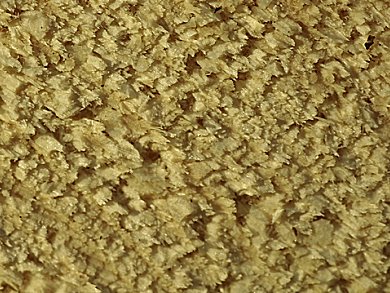Efficient lignocellulose deconstruction is a challenge for creating biofuels from plant matter. One of the key difficulties is that cellulose tends to orient itself into a sheet-like network of highly ordered, densely packed molecules. These sheets stack upon themselves and bond together very tightly due to interactions between hydrogen atoms. This prevents enzymes from directly attacking most of the individual cellulose molecules and isolating the sugar chains within them. Therefore, ethanol can only be extracted in usable quantities if the biomass is pretreated with costly, potentially toxic chemicals in an energy-intensive process.
S. Gnanakaran, Los Alamos National Laboratory, NM, USA, and colleagues use molecular dynamics simulations to analyze how cellulose changes structurally when pretreated with ammonia. The simulation shows that the pretreatment reduces the strength of hydrogen bonds in the cellulosic network. Channels are formed that allow ammonia molecules to penetrate into the cellulose fibril. An intermediate is formed that can be enzymatically attacked.
These findings provide avenues for improving existing chemical pretreatments to make them effective and economical.
- Probing the Early Events Associated with Liquid Ammonia Pretreatment of Native Crystalline Cellulose,
Giovanni Bellesia, Shishir P.S. Chundawat, Paul Langan, Bruce E. Dale, S. Gnanakaran,
J. Phys. Chem. 2011.
DOI: 10.1021/jp2048844


